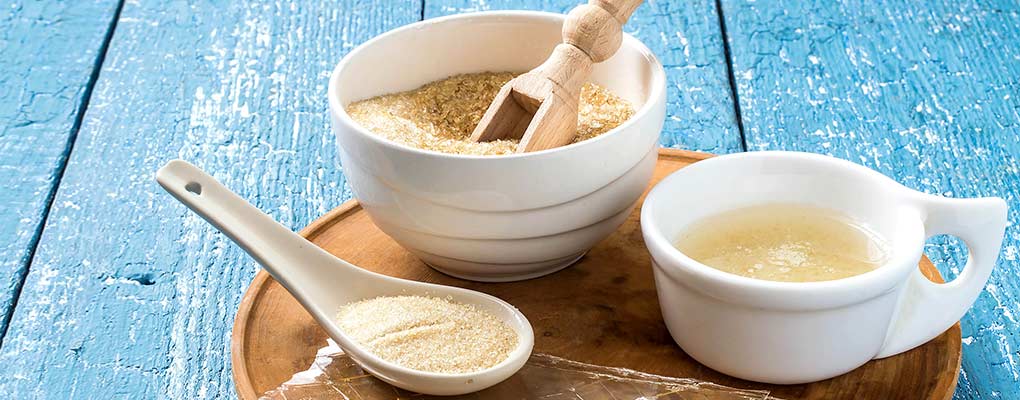
Gelatin is derived from collagen, which is the primary protein component of connective tissues such as bone, dermis, cartilage and tendons. It is used as a thickening agent in many food products including jellies, marshmallows, chewy lollies (gummy bears, jelly beans etc.), cereals, dairy products and desserts. Gelatin is also used as a capsule for many vitamins and medications and in cosmetics as it is translucent, colourless and almost tasteless. It is widely available in sheets, powders, and granules.
Gelatin has been reported to have beneficial biological functions for some time that justifies its use in food products, supplements and pharmaceutical preparations. Orally consumed gelatin has been shown to be involved in cartilage matrix synthesis (building new cartilage) and as such, is considered efficacious in the reduction of joint pain associated with osteoarthritis. Oral administration of gelatin has also been shown to have positive effects on skin, hair growth and nail quality. A word of caution here however, as the study design quality tends to be poor and performed in rats. Most researchers advocate for further studies.
There is also some promising research in the use of dietary gelatin for increasing bone mineral density (BMD), with researchers reporting improvements in BMD in mice who have had their ovaries removed, growing rats, calcium deficient rats and low protein-fed rats.
In line with the new-age trend in medical research, gelatin’s use as an anti-inflammatory is also being studied, particularly in digestive conditions such as Inflammatory Bowel Disease (IBD). The anti-inflammatory properties are thought to be the result of gelatin’s predominant metabolites (prolyl-hydroxyproline and glycine). These metabolites have been shown to improve anti-tumour markers and upregulate the production of certain interleukins, which are a class of glycoproteins involved in regulating immune responses. Interestingly however, researchers found these effects were improved when ingested as free compounds than as part of gelatin.
Unfortunately for vegetarians and vegans, the traditional process for producing gelatin involves boiling animal tissues and bones, particularly bovine hide, bone and pigskin, until they congeal into a gel-like substance.
Fortunately, there are suitable vegetarian and vegan alternatives that mimic gelatin’s thickening property in foods. These have been listed below. As yet, there is no suitable vegetarian substitute to that achieves the purported health benefits of orally ingested gelatin.
If you need a little extra help finding a healthy balance for you, consider seeking the help of an Accredited Practising Dietitian for tailored advice. A healthier, happier you starts with just one phone call to 1800 567 348. Alternatively you can register your interest online.
Tap to call us at 1800 567 348
Fill in your details below and our team will be in contact shortly to answer your questions and get you started.
"*" indicates required fields